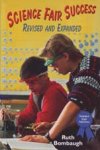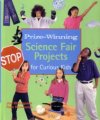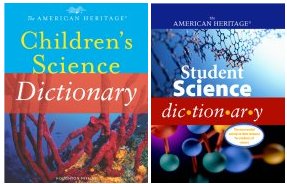Challenging the Forces of Nature Additional Information
You can learn more about the Discovery Channel Young Scientist Challenge at http://school.discovery.com/sciencefaircentral/dysc/ (Discovery Channel) and http://www.sciserv.org/dcysc/ (Science Service).
Information about this year’s DCYSC winners can be found at http://www.sciencenewsforkids.org/pages/sciencefairzone/news.asp and http://school.discovery.com/sciencefaircentral/dysc/finalists/winners.html (Discovery Channel).
Sohn, Emily. 2004. Einstein’s skateboard. Science News for Kids (Nov. 17). Available at http://www.sciencenewsforkids.org/articles/20041117/Feature1.asp.
______. 2003. Young scientists take flight. Science News for Kids (Oct. 29). Available
at http://www.sciencenewsforkids.org/articles/20031029/Feature1.asp.
Books recommended by SearchIt!Science:
 |
Science Fair Success— Ruth J. BombaughPublished by Enslow Publishers, 1999.
It’s science fair time and you don’t know where to begin. The first step—choosing a topic—is sometimes the hardest. This practical guide will give you step-by-step advice for creating a science fair project that will be interesting, fun, and wow the judges. The author, a science teacher who has helped many students through the science-fair process, suggests different ways to pick a topic. Next are tips for using scientific methods, keeping close track of the results, writing a report of your findings, and designing an eye-catching display. Examples of prize-winning projects will give you an idea of what teachers and judges are expecting. |
 |
Prize-Winning Science Fair Projects for Curious Kids— Joe Rhatigan, Rain NewcombPublished by Lark Books/Sterling, 2004.
“Yes, it’s science fair time again, and this year you’ve promised not to wait until the very night before the fair to do your experiment.” You’re going to pick a really interesting, exciting topic: But how do you decide? The first chapter of this book offers you advice on picking a topic, turning the topic into a question, and following the scientific method. The next three chapters suggest projects in biology, physical science, and chemistry. These 50 science fair projects explore memory, gravity, skin sensitivity, light pollution, bug zappers, mummifying fishes, boosting slime, growing crystals, and plenty more. Illustrated with color photos and diagrams, each experiment lists materials, explains the procedure, and offers you avenues for further investigations. |
Power Words
tornado A whirling, funnel-shaped cloud that sometimes develops during a violent thunderstorm.
Each tornado’s funnel of whirling air is different in size and strength. Some tornadoes appear in the air for a few seconds and then are gone; others can cause enormous damage when they move over the ground. The funnels can measure just a few yards across to more than a mile (1.61 kilometers), and the wind in funnels can spin as fast as 300 miles (483 kilometers) per hour.
tsunami A very large ocean wave that is caused by an underwater earthquake or volcanic eruption. A tsunami often causes great destruction when it strikes land.
Waves created by an underwater earthquake or volcanic eruption lose speed as they reach shallower water, but they gain height and get closer together.
 |
Copyright © 2002, 2003 Houghton-Mifflin Company. All rights reserved. Used with permission.